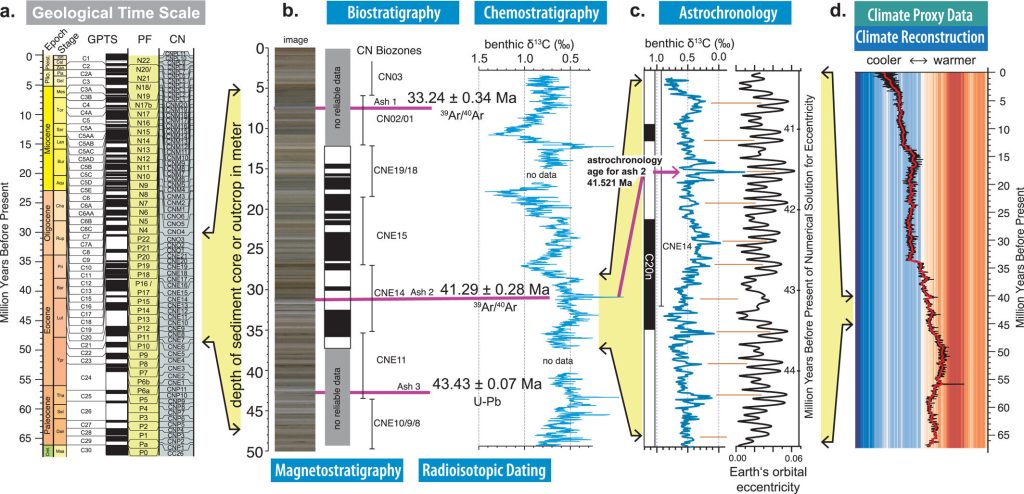
TIMES is the title of the international team’s project, which is an acronym for “Time Integrated Matrix for Earth Sciences.” The idea behind it is to launch a global program with the aim of synchronizing age models for particularly important geological climate records from the past 100 million years. The researchers have now outlined their motivation and necessity for this program in a publication in the journal Paleoceanography and Paleoclimatology.
Geological records from ocean drilling allow researchers to better understand how the natural climate system works over time and space. But to obtain reliable information, precise knowledge of the timing of past climate events is required, emphasizes Dr. Thomas Westerhold.
At present, many important climate archives are not sufficiently well synchronized to establish causal links between data from different locations with certainty. “In particular, age models for paleoclimate archives have proven to be a bottleneck when it comes to understanding the dynamics of past warm climate stages, which is so urgently needed to obtain information about future climate pathways,” says Westerhold.
As a multidisciplinary team from paleoceanography, paleoclimate research and geochronology, Westerhold and his co-authors emphasize in their publication that it is crucial to synchronize globally consistent and very precise dating for all important sedimentary climate archives across geographical regions.
One example: Recurring patterns in sediment cores trace changes in the Earth’s orbit around the sun, known as Milanković cycles. Like a metronome, these fluctuations have set the pace for climate change. Using these astronomical cycles, researchers can determine the age in certain layers of the ocean floor and thus synchronize the archives with extreme precision.
“It is important to now understand the biological and climatic processes on Earth that influence evolution, extinction, recovery and resilience. However, the most important climate proxy data from the past 100 million years, which can provide precise information about this, are not sufficiently synchronized in time across the different regions, which makes it considerably more difficult to understand the Earth’s climate dynamics,” explains Westerhold.
Most of the material and data for this period is available—because that is how far back the material goes that was obtained in the international ocean and continental drilling programs almost worldwide.
Synchronizing 100 million years of regional and global climate history is very complex, and the TIMES project is extensive. Since timing is everything, Westerhold’s team emphasizes, internationally coordinated work must begin now to calibrate the climate records of the past 100 million years so precisely that the Earth’s climate history can reliably help shape a safe future for humanity.
More information:
T. Westerhold et al, Timing Is Everything, Paleoceanography and Paleoclimatology (2024). DOI: 10.1029/2024PA004932
Provided by
MARUM – Center for Marine Environmental Sciences, University of Bremen
Citation:
Initiative calls for global collaboration to reconstruct climate of past 100 million years (2025, February 7)
retrieved 7 February 2025
from https://phys.org/news/2025-02-global-collaboration-reconstruct-climate-million.html
This document is subject to copyright. Apart from any fair dealing for the purpose of private study or research, no
part may be reproduced without the written permission. The content is provided for information purposes only.







